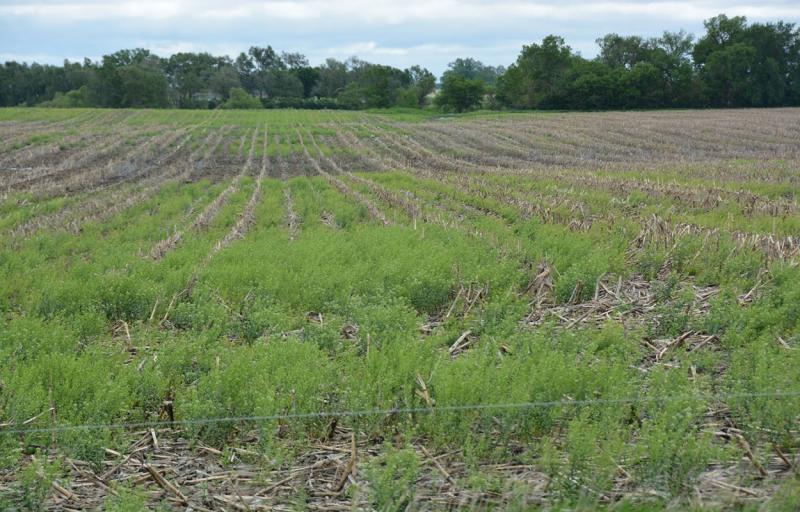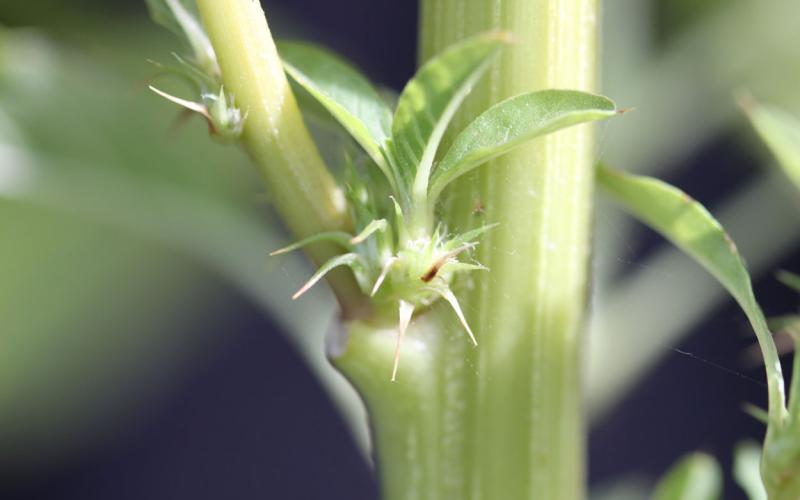
Written with contributions by Paul O. Johnson, former SDSU Extension Weed Science Coordinator; and Emmanuel Byamukama, former SDSU Extension Plant Pathologist.
The soybean cyst nematode (SCN) remains the most important soybean pest in South Dakota. SCN can cause yield loss even when no symptoms are observed on the soybean plants. The nematode feeds on the soybean roots robbing nutrients that would otherwise go into grain yield. SCN accumulates in the soil when susceptible soybean varieties are planted each season. SCN can also accumulate in the soil when alternative weed hosts are present.
Several weeds have been reported to be hosts for SCN but the most common ones in South Dakota are field pennycress and henbit. These winter annual weeds emerge in the fall and become established early in the spring (Figure 1). A recent study conducted at South Dakota State University and sponsored by the South Dakota Soybean Research and Promotion Council showed that these two weeds were commonly found and for fields that had SCN, these weeds supported SCN reproduction. Common mallow, shepherd’s purse and white clover were found to be poor hosts for SCN.
Weed Management Considerations

Whereas SCN can be managed through use of SCN-resistant varieties and crop rotation, presence of alternative SCN weed hosts can negate the benefits of these practices by providing a host for SCN to continue to accumulate in the soil. Winter annual weeds in rotated fields (Figure 1) or fallow fields before planting soybean (Figure 2) provide a host for SCN to continue to build up in the soil. It is important that these weeds are controlled proactively before SCN can complete its life cycle (25-30 days, depending on the soil temperature) on these weeds.
Some of the options for controlling winter annual weeds include applying a herbicide early in the spring in order to kill weeds that emerged in the fall. These weeds are more problematic in no-till fields; therefore, an early burndown would be recommended in those fields. Care should be taken when selecting an herbicide for controlling winter weeds in winter wheat or other cover crops since the herbicide can also kill the planted crop.


